

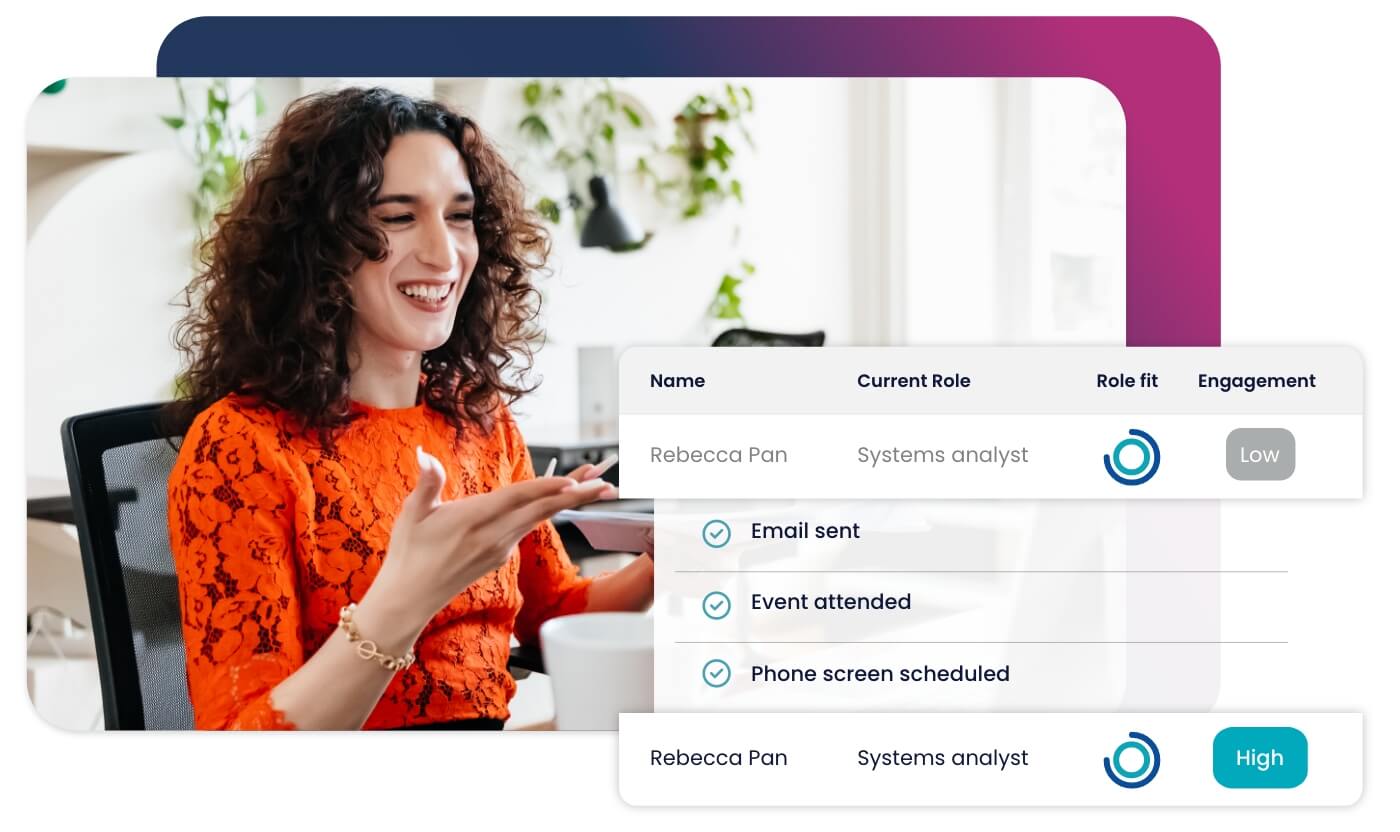
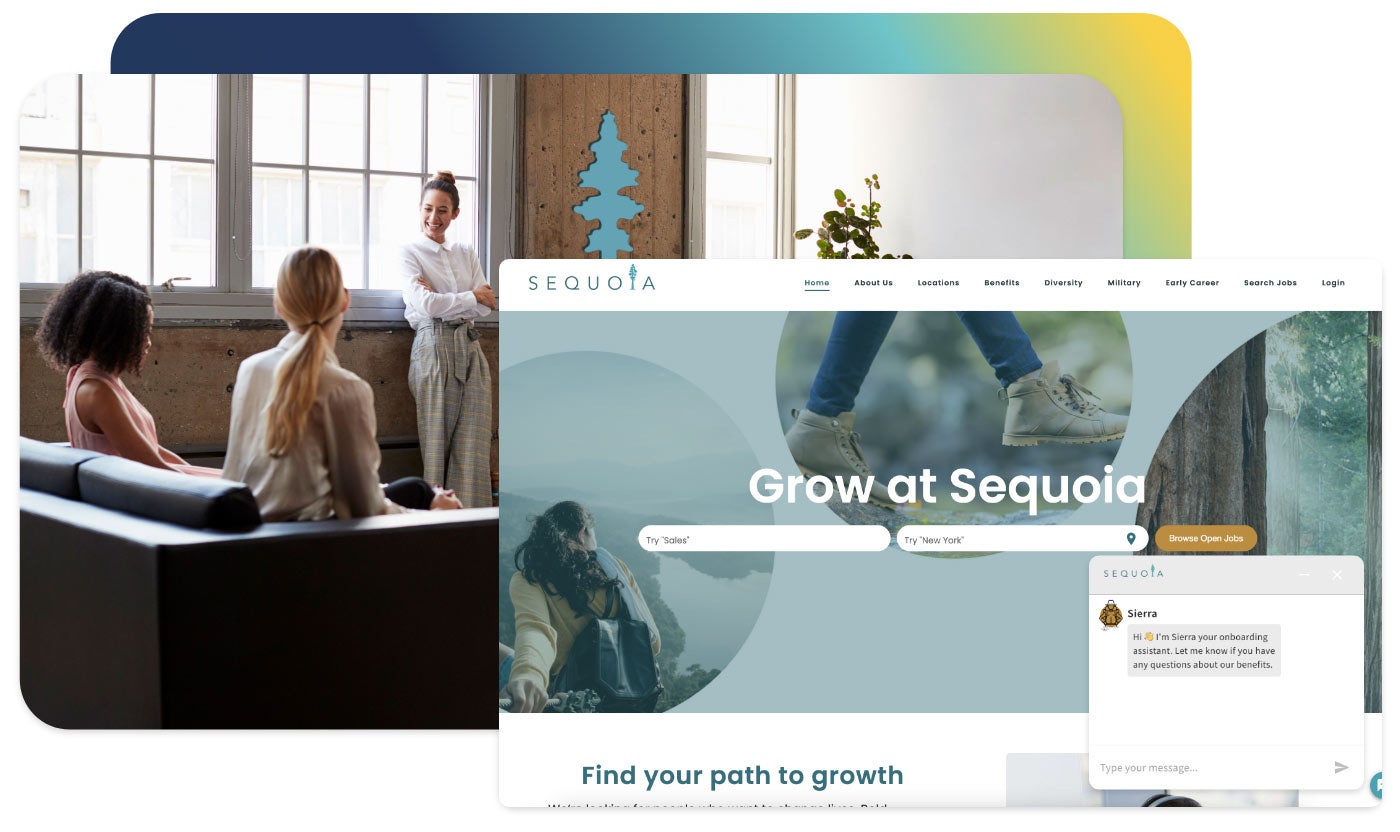


Accelerate hiring key talent to deliver care and exceed patient satisfaction.

Attract skilled candidates, speed up hiring and grow expertise in your workforce.

Simplify recruiting finance and banking talent with a platform for hard-to-fill roles.


Build a talent pipeline that engages and drives your business forward.


See how diverse and global enterprises use iCIMS to employ millions, drive innovation and connect communities worldwide.

Learn how a beloved restaurant hires 40,000+ annually with a great candidate experience.
Uncover unique market insights, explore best practices and gain access to talent experts across our library of content.


View press releases, media coverage, the latest hiring data and see what analysts are saying about iCIMS.

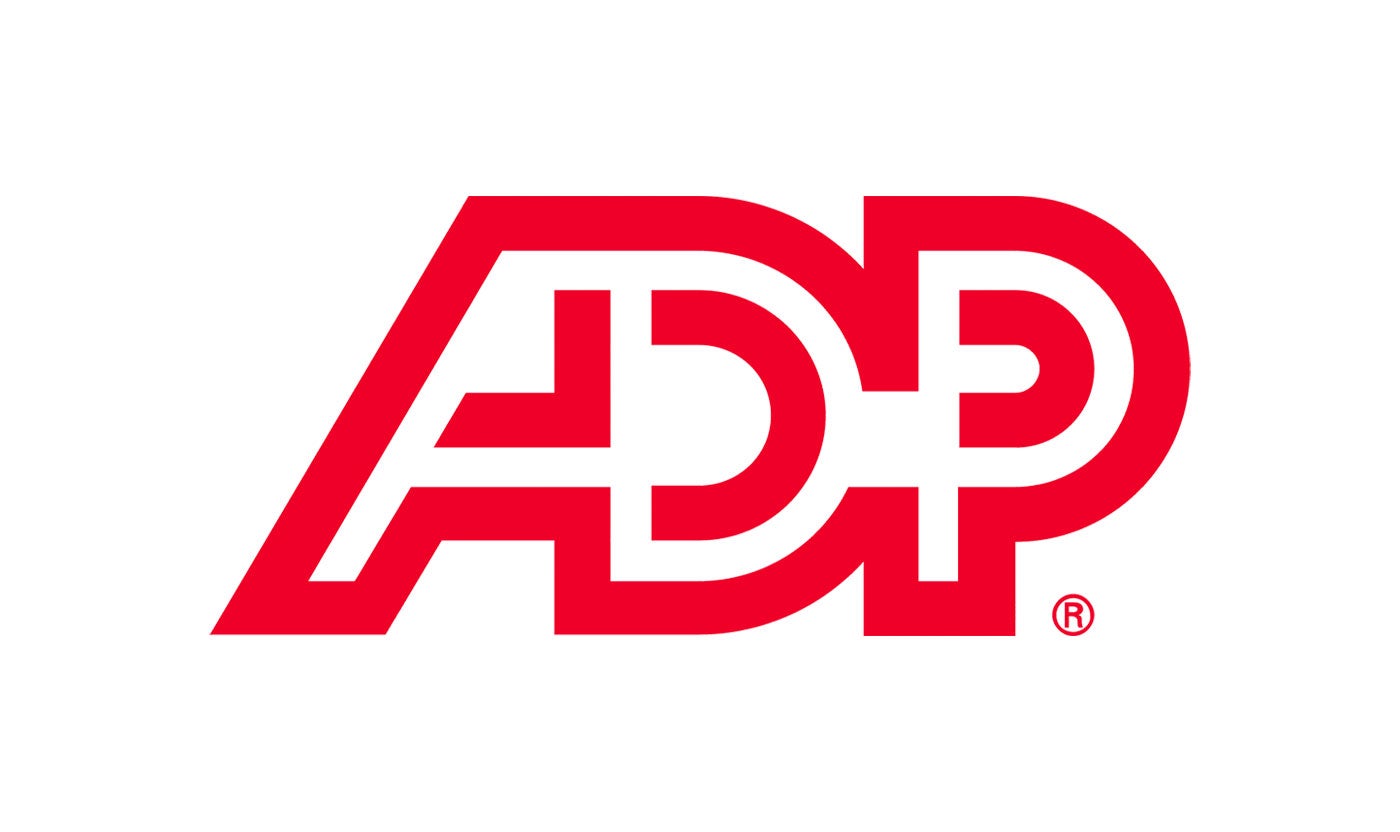
Streamline your tech stack and take advantage of a better user experience and stronger data governance with ADP and iCIMS.
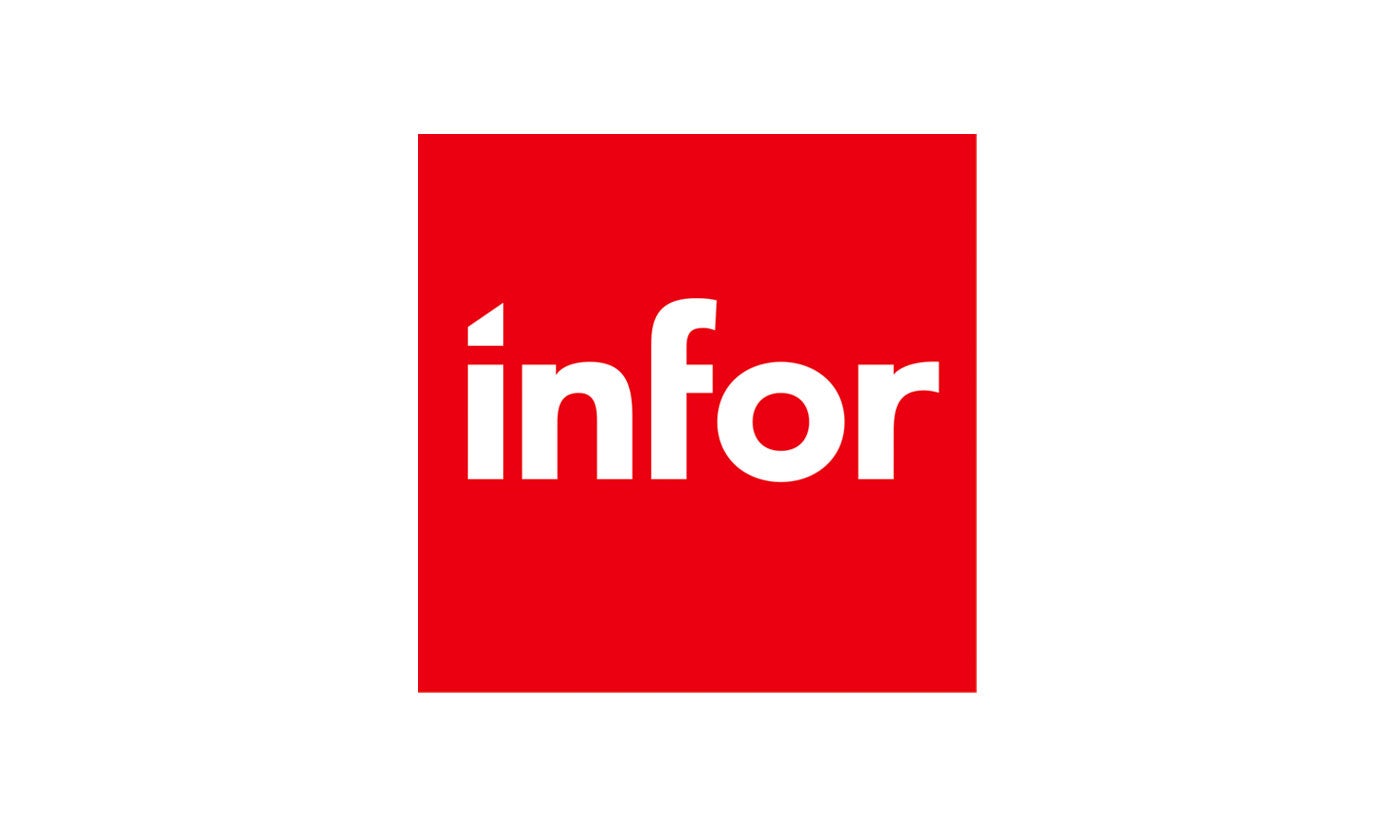
The combined power of iCIMS and Infor helps organizations strategically align their business and talent objectives.
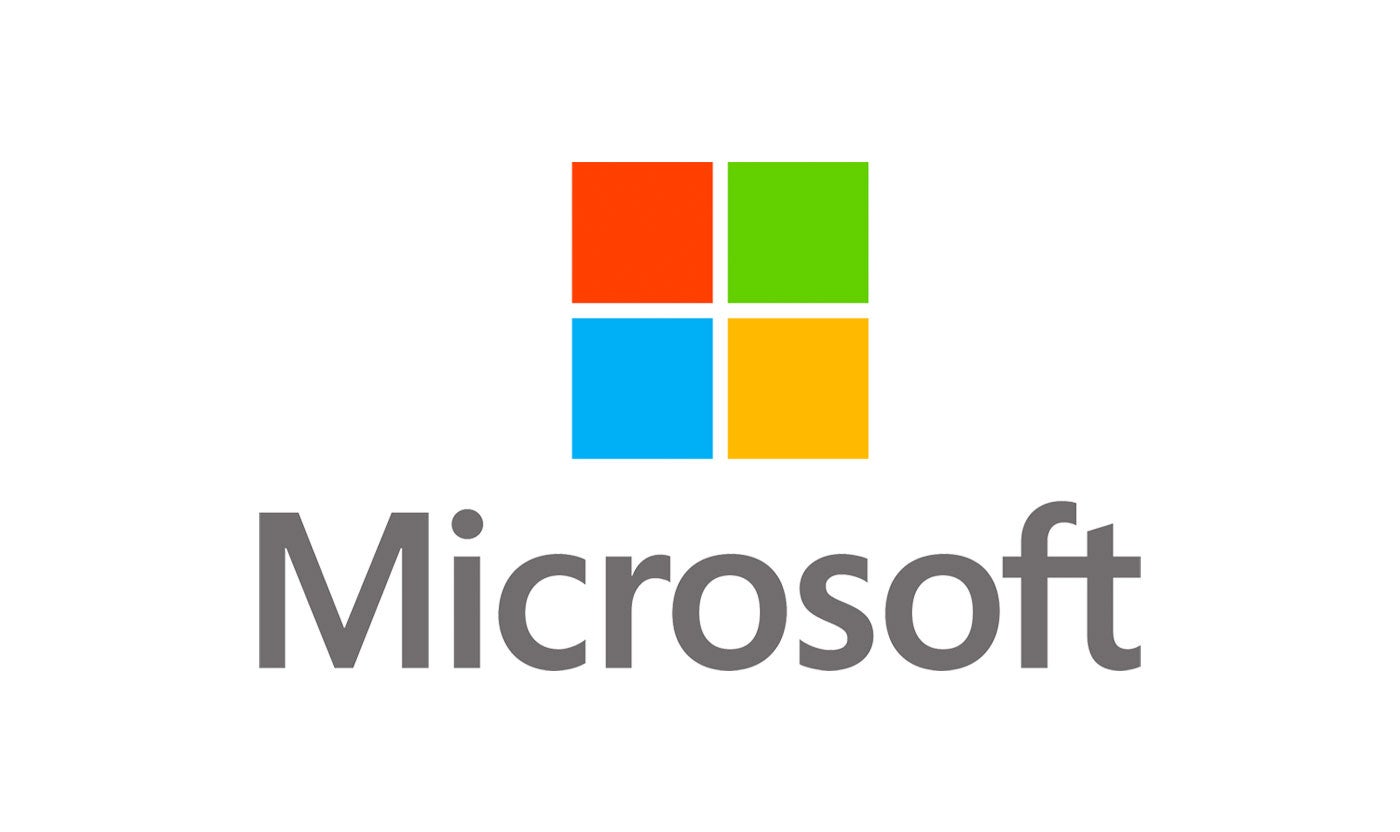
Our award-winning partnership with Microsoft is grounded in a shared desire to transform the workplace and the hiring team experience.
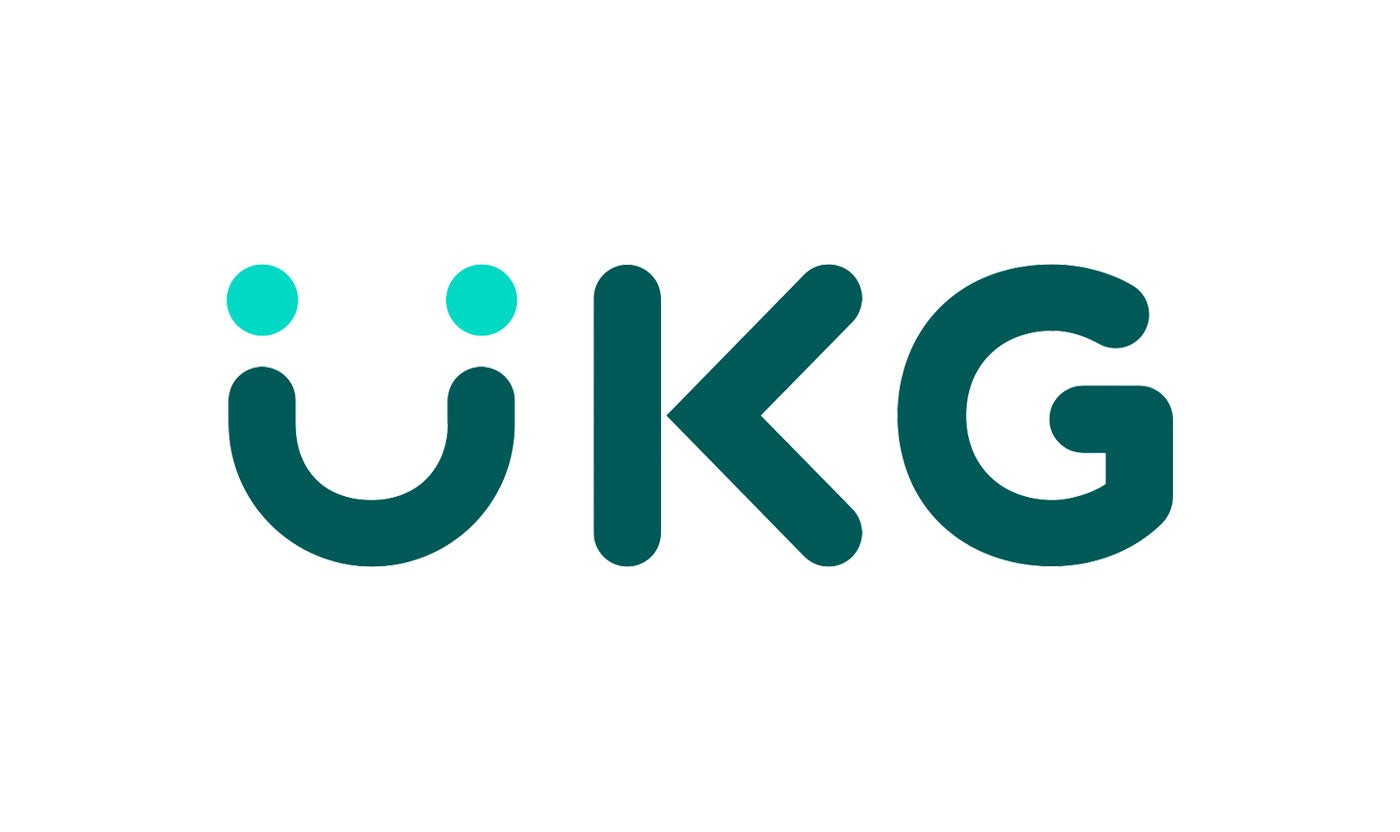
Our partnership with Ultimate Kronos Group (UKG) supports the entire talent lifecycle by bringing frictionless recruiting solutions to UKG Pro Onboarding.

It wasn’t that long ago that we were talking about the Great Resignation, when workers were resigning at record rates. Now, the Great Hesitation is more apt. Workers are less inclined to leave their current jobs. Likewise, many employers have paused hiring.
This, too, will change. The question is, when? And how?
If the last few years have taught us anything, it’s that trying to predict the future is a fool’s errand, but that doesn’t mean we can’t try to prepare.
For those who missed it, we recently released our latest Talent Experience Report. Inside are key details and trends relating to the gender gap, multigenerational hiring and the use of AI by both employers and job seekers.
While the report covers too much to recap here, a few selected data points are worth exploring further.
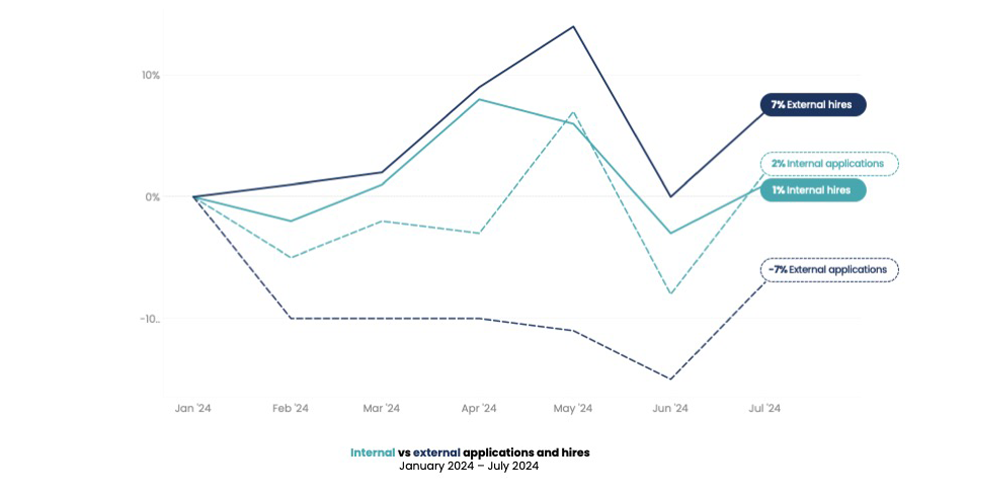
The expectations of today’s employers and job seekers aren’t fully aligned. Internal applications are up 2% from the beginning of the year, while external applications are down 7%. This suggests that job seekers are more cautious about leaving their current employers and are focusing their career aspirations internally—a trend some are calling the Big Stay.
However, employers may not be as keen on internal mobility. iCIMS data shows a 7% increase in external hires versus a 1% increase in internal hires.
In addition, the debate about remote work persists. Job seekers continue to value remote work, showing little desire to put a foot inside an office. In July, 22% of applications came from out-of-state residents. For their part, employers hired only 12% of applicants coming from out of state.
Takeaway for talent professionals: Don’t overlook internal hires. There’s value in retaining employees by offering avenues for career growth. Also, you may save time by avoiding having to reassure and coax anxious external job seekers to apply. Building a strong talent pipeline and automating candidate relationship management can help.
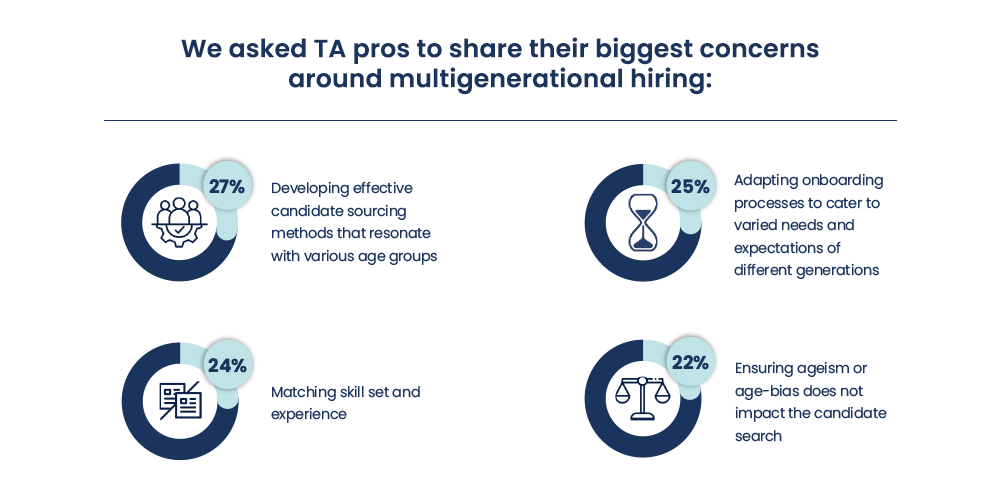
Whether driven by economic factors or simply a desire to stay busy, many older workers are coming out of retirement. Nearly half (45%) say they know someone who has “unretired” and re-entered the workforce after the age of 55.
Despite this, 67% of baby boomers say it’s easier for Gen Z candidates to land a job. While this has been a long-standing perception, especially among older workers, experience does have advantages. Today, 72% of TA professionals say they are actively recruiting employees over the age of 55.
There are generational differences when it comes to what a good candidate experience looks like. Younger applicants want more frequent communication, with 37% saying they expect an update at least once per week. On the other hand, about half of older applicants (47%) say they want an update only when there are tangible next steps.
Takeaway for talent professionals: There is no one-size-fits-all candidate experience. Older workers may benefit from some additional targeted recruitment marketing to assuage anxiety about reentering the workforce. On the other hand, younger workers could use additional communication as the hiring process proceeds.
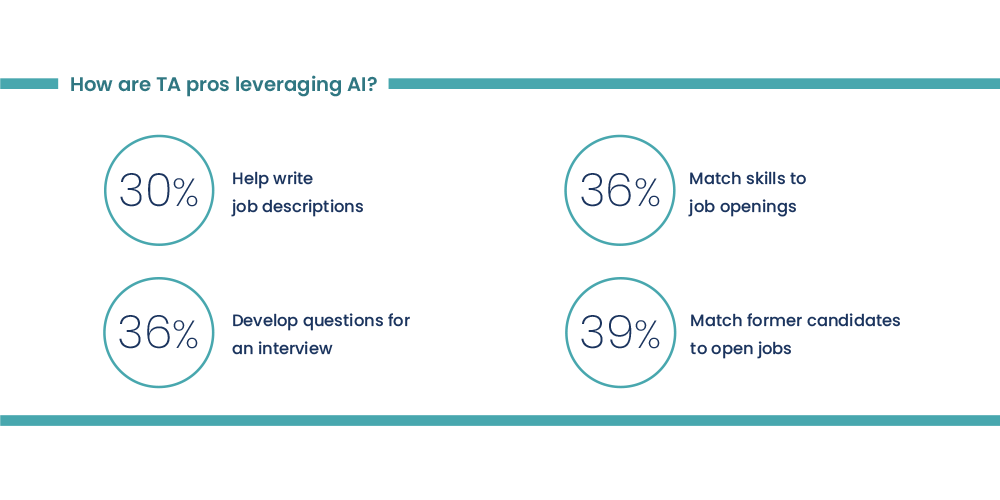
About 90% of CHROs say that, over time, they see the role of recruiter evolving into that of a strategic advisor. However, several things must happen before that vision becomes a reality. Primary among them, recruiters need more time to focus on strategic initiatives than they have today. This could happen by reducing recruiters’ other responsibilities—unlikely in the current economic climate. Alternatively, recruiters could find ways to do their jobs more efficiently.
Advancements in AI represent an opportunity on this front—if TA teams get behind the technology. One-third say they fear AI will replace them or make their jobs obsolete. However, reservations and reluctance haven’t turned into refusal. TA pros told us that by using AI, they are saving an average of about two and a half hours per week.
Takeaway for talent professionals: Based on our data, the risk AI poses to recruiters’ jobs is low. In fact, at a minimum, AI presents an opportunity to cut back on busy work; at best, AI may offer opportunities for career growth. For team leaders, now is a good time to investigate how AI is being used by your team, as well as to consider where it could be implemented in the future.
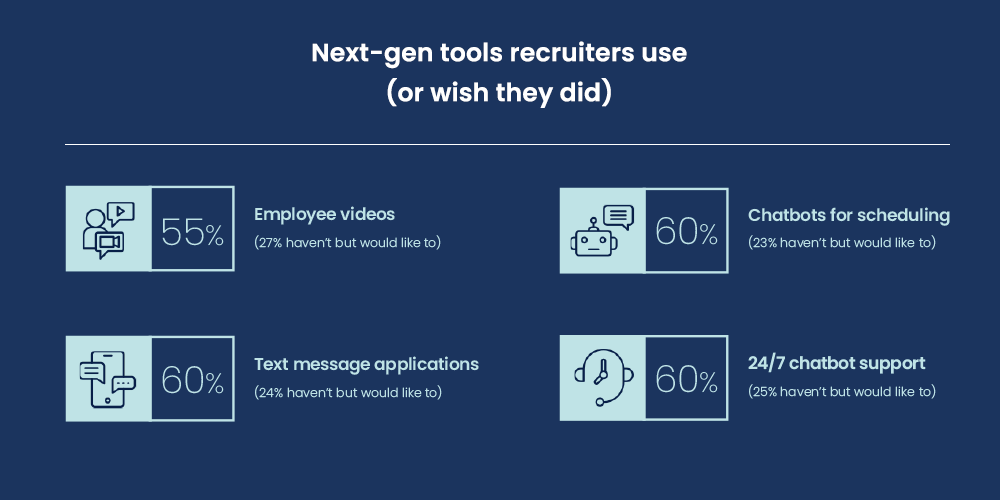
The use of AI in recruiting hasn’t been uniform. Some recruiting teams have access to AI built into the recruiting software they use. Others are using AI in a less formal – or unofficial – way.
Regardless of how AI is being used, recruiters report success in eliminating tedious, often repetitive, tasks. They’re also using AI in creative ways, including getting help writing job descriptions and developing interview questions. Of those who haven’t fully committed yet, 64% say they’re interested in using AI more throughout the recruiting process.
Recruiters be warned: You aren’t the only ones using AI to save time or get an edge. More than half of millennials and Gen Z say they’re already using some form of Gen AI to help write resumes, cover letters and queries related to job applications.
We don’t know exactly what will come next. The good news: You don’t have to know the future to prepare for it. We hope this brief look at the Talent Experience Report has provided helpful information as you navigate through an uncertain labor market.
There is still more to discover. Click here to get the full report.

Alex is well-versed in content and digital marketing. He blends a passion for sharp, persuasive copy with creating intuitive user experiences on the web. A natural storyteller, Alex highlights customer successes and amplifies their best practices.
Alex earned his bachelor’s degree at Fairleigh Dickinson University before pursuing his master’s at Montclair State University. When not at work, Alex enjoys hiking, studying history and homebrewing beer.




